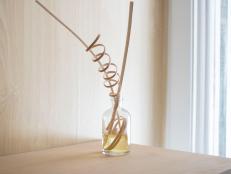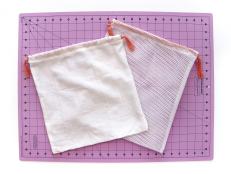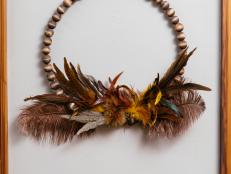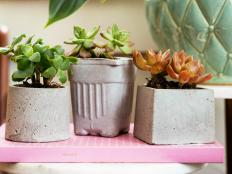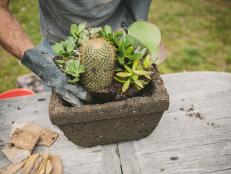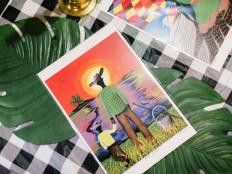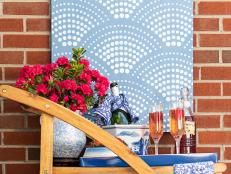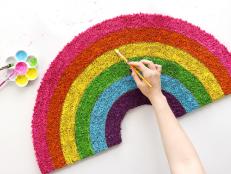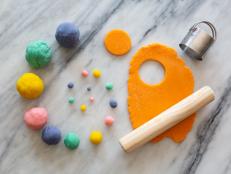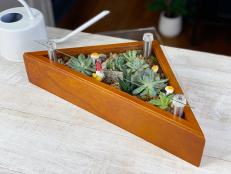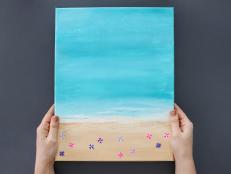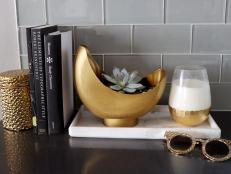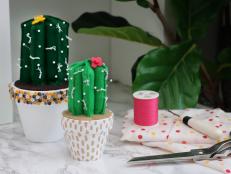DIY Art: Create a Torn Paper Landscape
Mountains ho! Turn inexpensive sheets of colorful paper and chalk pastels into an artistic take on your favorite outdoor scene.

Sarah Busby

Materials Needed
- sheets of artist paper in a variety of colors that fit your chosen landscape (at least one sheet that’s the same size as your frame for the background)
- chalk pastels in assorted colors
- glue stick
- water dropper or oral syringe
- cutting mat or plastic drop cloth
- scissors
- paper towels
- frame and framing materials (screw eyes, awl and picture wire)
- flat screwdriver or putty knife
Before Getting Started
Search online for a royalty-free image, or use one you shot yourself, of your favorite outdoor scene. Note: This image is for inspirational purposes only and will help you decide on colors and general shapes for each of the landscape’s layers, but your finished artwork won’t be an exact representation.
Create Background
The area farthest away from the viewer will be the background and the piece of paper that all other layers will be attached to. For our artwork, we chose the Great Smoky Mountains so the sky is our background. Remove the glass from your chosen frame and use it as a template to ensure the background is the same size as your frame; trace and cut out.

Sarah Busby
Give Depth to the Sky
In nature, the sky is a darker shade of blue high in the sky and a lighter color as it nears the horizon. Using chalk pastels in white, medium blue and dark blue, cover the top portion of the background in wide bands of color (Image 1). Using a dry paper towel or your finger, blend the chalked layers together (Image 2).

Sarah Busby

Sarah Busby
Create Mountain Ranges
Using your inspirational image for reference, select papers in shades of purple to blue — the lightest shades will be the distant mountains while the hills should darken as they come closer. Fill a water dropper or oral syringe with water. Using your chosen landscape image as inspiration, gently depress the syringe while dragging the dropper along the paper to create a wet line that features the peaks and rolling outline of a mountain range (Image 1). Allow the water to soak into the paper, weakening the fibers, for a few minutes or until most of the water has soaked in. Using a paper towel, wick up any remaining visible water droplets (Image 2). Put pressure on each side of your wet line, then carefully tear the paper along the weakened line to create the mountain’s outline (Image 3). Create multiple mountain layers, remembering to choose darker paper as you work your way from the background to the foreground. Set torn paper aside to fully dry.

Sarah Busby

Sarah Busby

Sarah Busby
Add Dimension to Mountain Ranges
The Great Smoky Mountains get their name from the naturally occurring fog that gathers in valleys. To recreate this beautiful phenomenon and to give the illusion of more distance between the mountain ranges, cover the mid portion of each torn mountain section with white chalk (Image 1). By comparison, the tops of mountains appear darker; use a chalk pastel in the same color as your range to slightly darken the torn edge (Image 2). Use a paper towel or your finger to blend the chalked areas together (Image 3).

Sarah Busby

Sarah Busby

Sarah Busby
Create Tree-Lined Hills
In nature, objects closer to the viewer are more in focus so you’re able to pick out some details like the jagged outline of trees. Keep this in mind (and continue to refer to your inspirational landscape image) when using the water dropper or oral syringe to create the outline of tree-covered hills (Image 1). After the water has mostly soaked into the paper, weakening the fibers, gently dab to remove any puddled water (Image 2). Put pressure on each side of your wet line, and carefully tear the weakened paper to create the tree line (Image 3). If desired, use chalk pastels to give the tree-covered hills a bit more color and definition.

Sarah Busby

Sarah Busby

Sarah Busby
Layer Mountains and Hills
Working from lightest to darkest, place the torn paper layers in a way that visually looks best to you (Image 1). Note: As you shift layers around, occasionally place the frame over your composition to ensure that you’ll like the final composition. You may also want to add a bit more fog between layers to lend more visual depth (Image 2).

Brittney Gazaway

Brittney Gazaway
Glue Pieces Down
Working from the background (Image 1) to the foreground (Image 2), gently lift each piece and tack it in position with a few dots of glue from a glue stick.

Sarah Busby

Brittney Gazaway
Cut Off Excess Paper
Using scissors, cut off the paper that extends beyond the background (sky layer) to create clean edges (Image 1) and reveal your finished landscape (Image 2).


Frame and Prep for Hanging
First, thoroughly clean both sides of the frame’s glass using window cleaner and a paper towel (Image 1). Place landscape in the frame and cover with the frame’s backing. If your chosen frame has existing tabs, slide those into place or, if you’re using an antique frame like we did, secure the backing with glazier’s points by sliding each point into the wood of the frame using a flat screwdriver or putty knife (Image 2). To wire the frame for hanging, use an awl or large nail to punch holes in both sides of the frame, insert a screw eye into each hole and tighten (Image 3). Slide picture wire through the screw eyes and cut off excess leaving a few inches of wire on each side; twist till taut (Image 4).

Brittney Gazaway

Brittney Gazaway

Brittney Gazaway

Brittney Gazaway
Proudly Display
Hang your finished artwork in a bedroom, den, kid's room or any space in your home that could use a colorful dose of the great outdoors.

Sarah Busby






